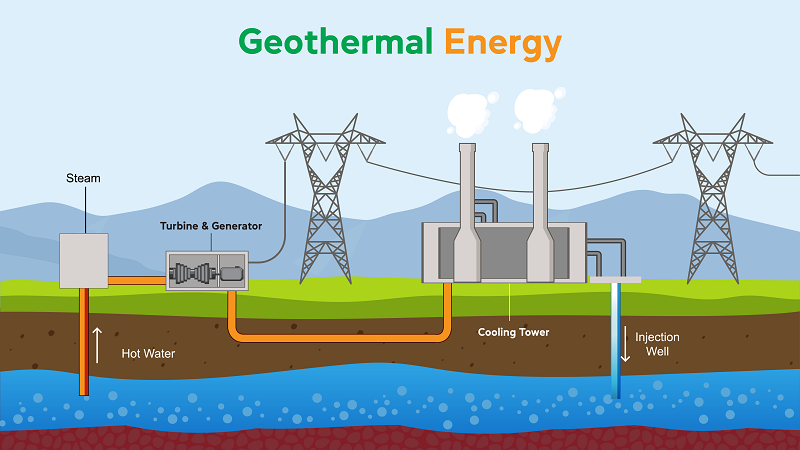Harnessing Geothermal Energy for Sustainable Power Generation

Harnessing Geothermal Energy for Sustainable Power Generation
Geothermal energy, often overlooked in the realm of renewable resources, holds immense potential for sustainable power generation. As we delve into the mechanisms and advantages of harnessing geothermal energy, it becomes evident that this natural heat source can play a pivotal role in shaping a greener and more sustainable future.
Understanding Geothermal Energy
Geothermal energy is derived from the Earth’s internal heat. Beneath the Earth’s surface, there are vast reservoirs of hot water and steam that can be tapped into for power generation. This renewable energy source is accessible through geothermal power plants, which are strategically located in regions with high geothermal activity.
The Process of Harnessing Geothermal Energy
To harness geothermal energy, wells are drilled into the Earth’s crust to access the hot water and steam reservoirs. The high-pressure steam produced is then directed towards turbines, which generate electricity. This straightforward process highlights the efficiency and reliability of geothermal power.
Environmental Benefits of Geothermal Energy
One of the key advantages of geothermal energy is its minimal environmental impact. Unlike fossil fuels, geothermal power generation produces negligible greenhouse gas emissions. By transitioning to geothermal energy, we can significantly reduce our carbon footprint and combat climate change.
Steady and Reliable Power Supply
Geothermal energy provides a continuous and reliable power supply. Unlike solar or wind power, geothermal resources are not dependent on weather conditions. This makes geothermal power plants an excellent option for providing a stable and consistent source of electricity to communities and industries.
Applications Beyond Electricity Generation
The utility of geothermal energy extends beyond electricity generation. Direct use applications include heating buildings, growing crops in greenhouses, and even aquaculture. These versatile applications make geothermal energy a valuable resource for various sectors.
Investing in Geothermal Infrastructure
As we strive to transition to cleaner energy sources, investing in geothermal infrastructure is crucial. Governments and private entities should collaborate to develop and expand geothermal projects. This will not only contribute to energy sustainability but also create job opportunities and stimulate economic growth.
Challenges and Solutions
While geothermal energy offers numerous benefits, it is not without its challenges. Some regions may lack viable geothermal resources, and drilling deep wells can be expensive. However, advancements in technology and ongoing research are addressing these challenges, making geothermal energy increasingly accessible and cost-effective.
Global Impact and Potential for Developing Nations
Geothermal energy has the potential to transform the energy landscape globally. Developing nations, in particular, can benefit from harnessing their geothermal resources to meet growing energy demands sustainably. This can reduce dependence on non-renewable energy sources and foster economic development.
Geothermal Energy Harnessing: A Call to Action
In conclusion, geothermal energy stands as a viable and sustainable solution for our energy needs. By understanding the process, acknowledging its environmental benefits, and investing in infrastructure, we can unlock the full potential of geothermal energy. Embracing this renewable resource is not just a choice; it’s a crucial step towards a cleaner and more sustainable future.
To learn more about geothermal energy harnessing, visit Geothermal Energy Harnessing for additional insights.








